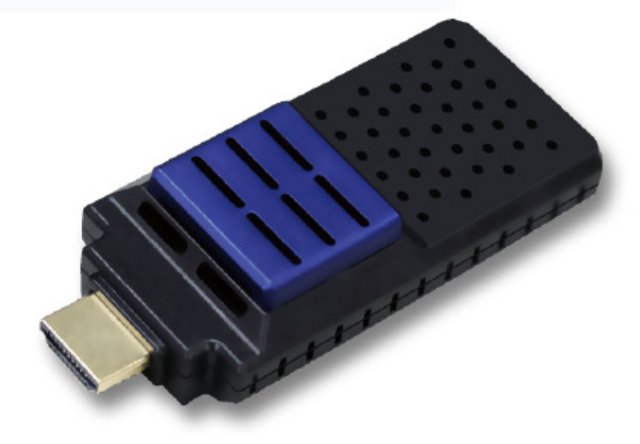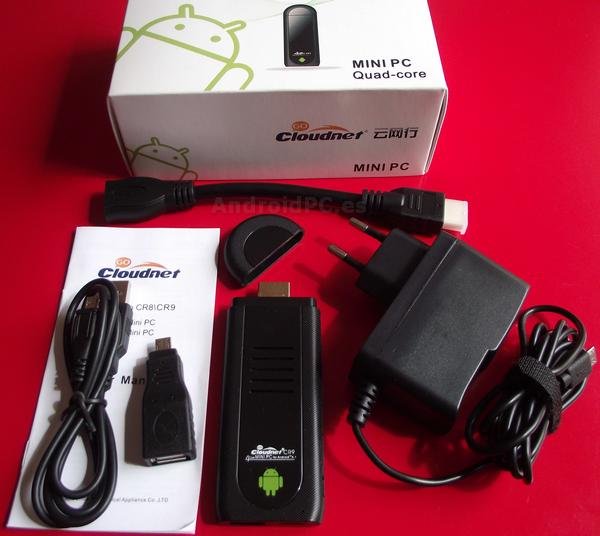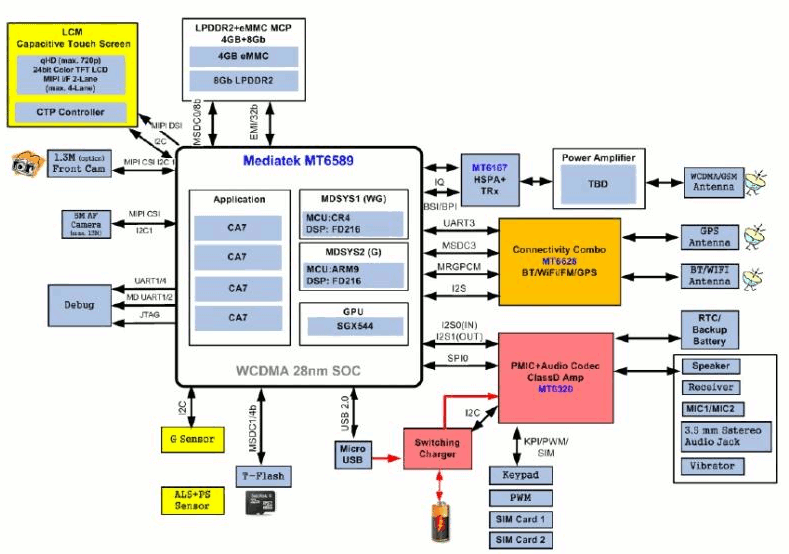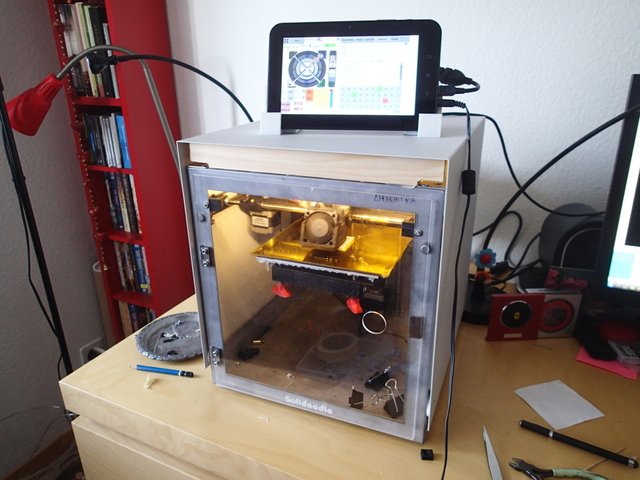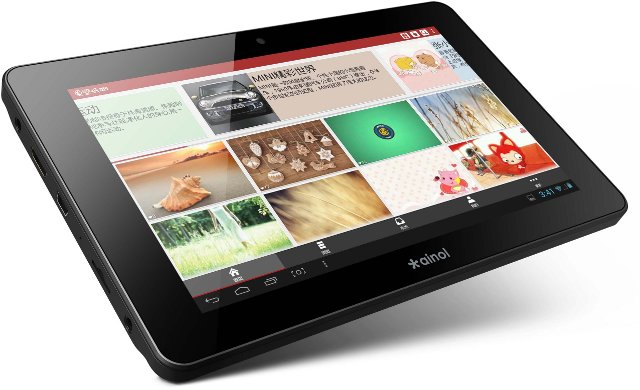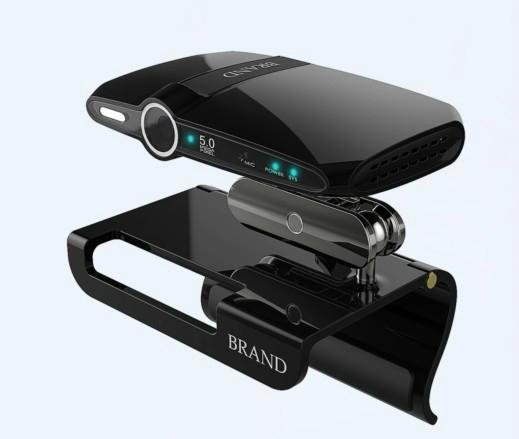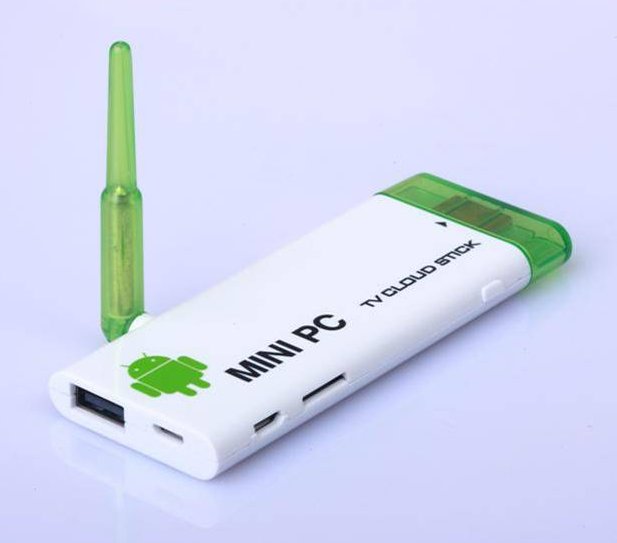Miracast is a new standard allowing you to play videos or mirror your Android device display on a TV via Wi-Fi direct. All you need is a Wi-Fi device that can be connected to the HDMI and USB (for power) ports of your TV, and decode common video codecs. There are not many devices available on the market, but I’ve just found out about AX-14, a Wi-Di and Miracast HDMI adapter that lets you connect your Windows 7 or 8 to your TV via Wi-Di, or your Android / iOS via Miracast. The device also supports DLNA. The hardware specs are said to be as follows: Processor – MIPS24Kc processor (RTD1185PA) @ 500MHz System Memory – 256 MB DDR3 SDRAM Storage – 128 MB NAND Flash Video and Audio engine with HW acceleration Video Codecs & Formats – MPEG-1,MPEG-2,MPEG-4 SP/ASP( Xvid), MPEG-4 AVC(H.264), AVS, VP6, Motion JPEG, H.263 , H.264, […]
CloudnetGo CR9 RK3188 mini PC Review
The folks at AndroidPC.es have received a preliminary sample of CloudnetGo CR9 HDMI TV dongle powered by Rockchrip RK3188 quad core processor with 2GB RAM and 8GB flash, and posted an unboxing video and a review of the device. That’s the first review of a RK3188 mini PC I’ve ever seen. It’s in Spanish, so let’s provide a summary of their findings in English. Please note that it’s an early sample, so minor hardware changes may occur, and Android 4.1 will be upgraded to 4.2 once it ships later this month. CloudnetGO CR9 Unboxing The package contains the device itself, a 5V/2Apower supply, an extra short HDMI cable, a micro USB to USB cable, a micro USB to USB adapter and a user manual. If you prefer unboxing videos, they uploaded one with background music, no commentary. First Boot and First Impressions Let’s connect the device to the TV HDMI […]
Design West Summit – 23-25 April 2013
Design West 2013, previously known as the Embedded Systems Confertence, will take place later this month, on 23-25 April to be exact, at San Jose McEnery Convention Center in San Jose, California, US. The event will be divided into 22 tracks dealing with software development, hardware design, operating systems, security and more: Android Certificate Program – Two-day hands-on embedded android workshop. Black Hat Summit – The Black Hat Embedded Security Summit will provide electronics professionals with essential information and tools, as well as a forum for the discussion and evaluation of the latest solutions for securing their embedded systems. Training courses will focus on topics such as Network Security, Incident Response, Web Application Security, and Exploit Development. Connectivity and Networking – The Connectivity and Networking track educates design engineers on wired and wireless communications, spanning need-to-know topics from essentials of USB device development to antenna and RF system design. Debugging […]
Mediatek MT6589 Quad Core Cortex A7 Smartphones Galore
Last week, I wrote about low cost quad core tablets based on Actions Semi ATM7029, and today it’s time to look at cheap quad core smartphones, which are all powered by Mediatek MT6589 quad core Cortex A7 SoC, with prices starting at about $130 US. I’ll start by a short overview of Mediatek processor, followed by a few smartphones based on MT6589, starting with higher priced smartphones / phablets with bigger screens and more features to the cheapest ones. Mediatek MT6589 Overview Beside featuring four ARM Cortex-A7 cores, this SoC comes with an Imagination Technologies PowerVR Series5XT GPU, namely SGX544, an advanced multi-mode UMTS Rel. 8/HSPA+/TD-SCDMA modem and dual SIM support. On the multimedia side, it supports cameras up to 13MP, 1080p video playback and recording at 30fps, and LCD screens up to Full HD resolution (1920×1080). It is usually interface with MT6620 connectivity combo providing 802.11n Wi-Fi, BT4.0, GPS […]
PengPod 700 Linux Tablet Used As a 3D Printer Touchscreen Controller
PengPod 700 & 1000 are two of the rare Linux tablets to be available on the market. Those tablets are based on AllWinner A10 SoC which can support both Android and Linux thanks to independent developers. After a successful Indiegogo campaign, where they managed to received pledges for a few hundred units of both model, people started to receive their Linux tablets earlier this year. Francesco Santini decided to purchase PengPod 700 in order to use it as an touchscreen controller for his 3D printer (Solidoodle). He modified Pronterface, a graphical user interface written in Python to control 3D printer, for the 7″ display the of PengPod tablet, and made the change available in his github account https://github.com/fsantini/Printrun-pengpod700. He uses a SAMBA share to copy G-code files (“G-code is the common name for the most widely used numerical control (NC) programming language”), and load the required file from the PengPod […]
Ainol NOVO 7 Crystal II Quad Core 7″ Tablet is Available for $99
Earlier this year, several blogs and news website reported about Cherry Mobile, a 7″ Android tablet powered by Actions Semiconductor ATM7029 quad core Cortex A9 processor, that sells for just $99 in the Philippines. This morning I’ve found a quad core tablet with similar specifications that also sells for $99 on Asiapads (after using AINOLCII coupon) . The Ainol NOVO 7 Crystal II comes with a 7″ touchscreen, is powered by ATM7029 SoC with 1GB RAM and, 8GB NAND Flash. Tablet Specifications: SoC – Actions Semi ATM7029 Quad Core Cortex A9 @ 1.5 GHz + Vivante GC1000 (Plus) GPU System Memory – 1GB DDR3 RAM Storage – 8GB NAND Flash + micro SD slot Display – 7-inch capacitive touchscreen LCD (Resolution: 1024*600) Connectivity – WiFi: 802.11b/g/n Camera – 0.3 MP front camera Video Output – mini HDMI Audio I/O – 3.5 mm headphone jack USB – 1x micro USB OTG port […]
Veidoo HD2 Android Set-top Box Features a 5MP Camera
There seem to be more and more Android set-top boxes that can be fitted on top of the TV, but if you are mainly interested in video conference they may not always have very good cameras: MK818 comes with a 0.3MP camera and Archos TV Connect has a 1MP webcam according to Arctablet, which is good enough for 720p video conferencing. On the contrary, Veidoo HD2, an Android 4.0 set-top box powered by AllWinner A10, comes with a 5MP camera which should allow you, in theory, to do video conference in 1080p if your internet connection permits it. Here are the specifications of the device: SoC – Allwinner A10 Cortex A8 @ 1GHz + Mali-400 GPU Memory – 1GB RAM Storage – 8GB + micro SD slot (Up to 32GB) Connectivity – Wi-Fi 802.11b/g/n + 3G support via external 3G dongle Camera – 5.0MP auto focus Video Output – HDMI […]
CX-803 II Android mini PC Features 2GB RAM, an External Antenna
Several mini PCs have been claimed to come with 2GB RAM (e.g. S21H, MK812), but it turned out the sellers simply made a mistake, or possibly lied to sell a few more sticks. To date, the only HDMI TV dongle which you can buy and expect it to really come with 2GB RAM is the PQ Labs iStick A200, but we’ve now got another option with the CX-803 II (aka CX-803B or FX5) powered by Rockchip RK3066 with 2GB RAM, 8GB flash and a short external antenna. If the picture below looks similar, it’s because it’s an upgrade of CX-803 / AVS-TV603 with more RAM, more flash and built-in Bluetooth. Here are CX-803 II specifications: SoC – Rockchip RK3066 @ 1.6 GHz + Mali-400 MP4 GPU System Memory – 2GB DDR3 RAM Storage – 8GB NAND flash + micro SD slot (up to 32GB) Video Output – HDMI 1.4 Connectivity: […]


